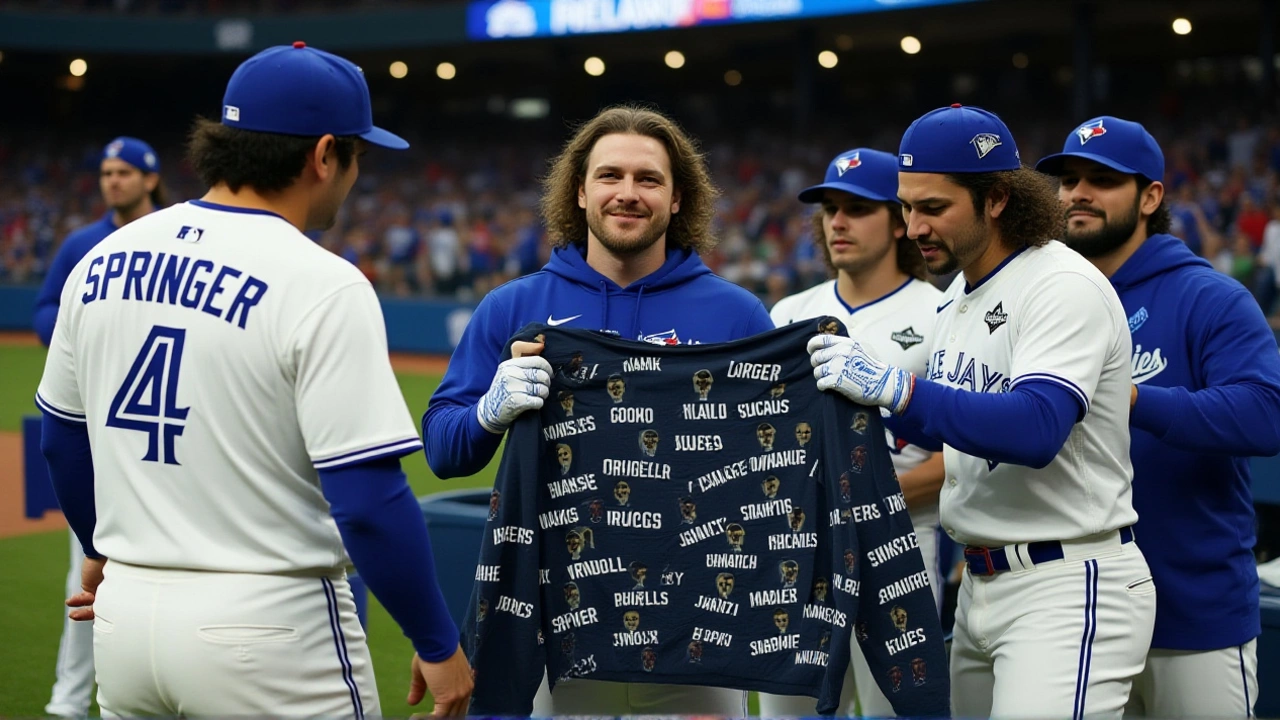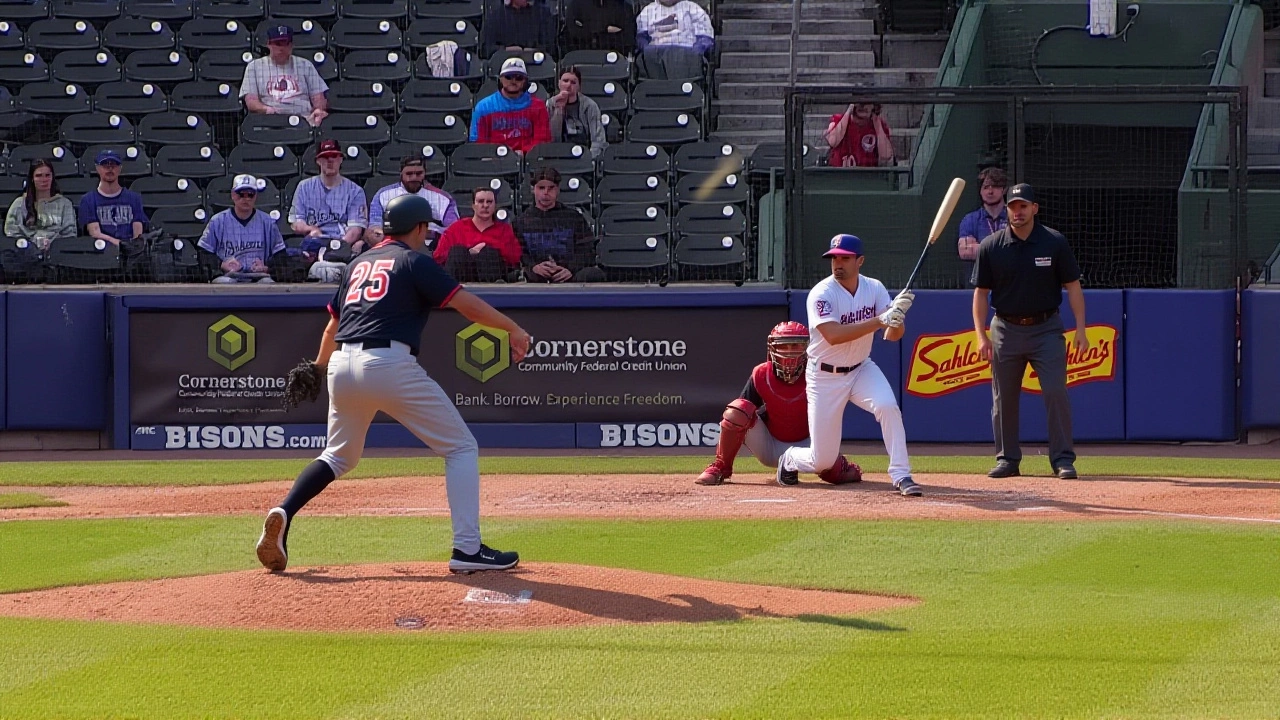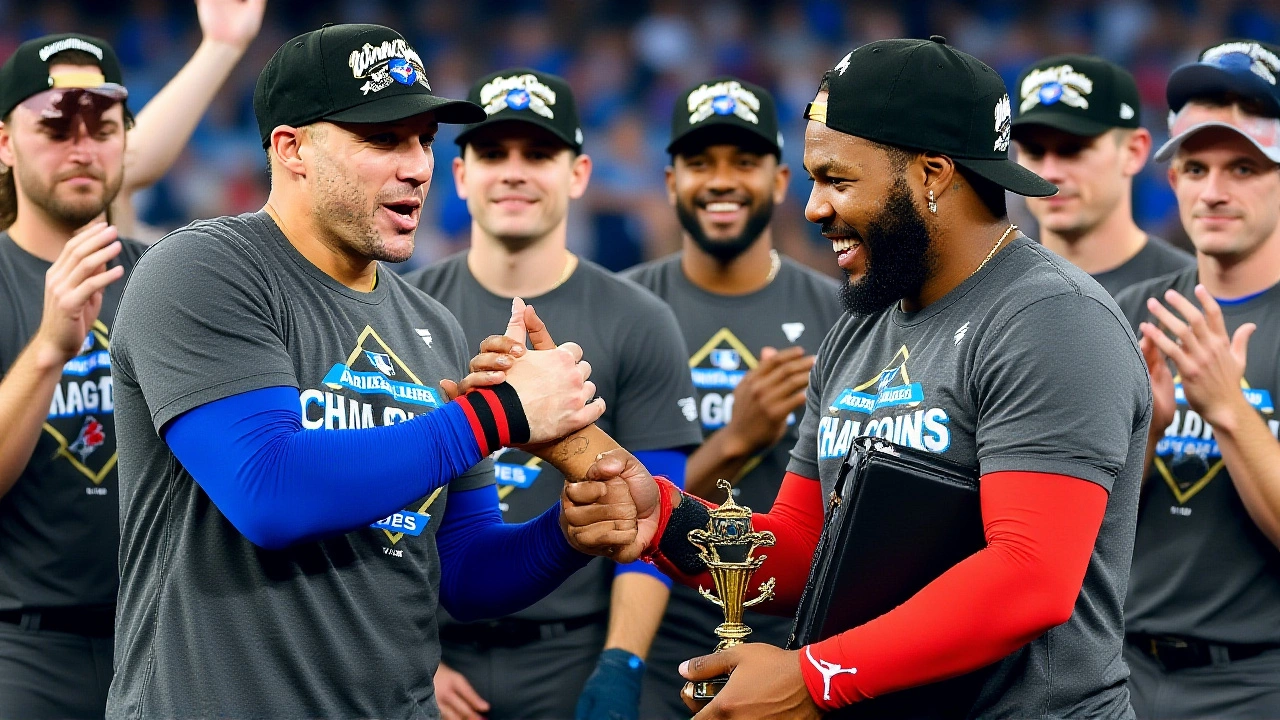On October 29, 2025, at 8:07 PM EDT, the 2025 World Series changed in the span of three pitches. With the series tied 2-2 and the weight of a 32-year championship drought hanging over the Toronto Blue Jays, 26-year-old Canadian left fielder Davis Schneider swung at the first pitch from Blake Snell—a 97-mph fastball—and sent it soaring into the left-field seats at Rogers Centre in Toronto. Before the crowd could even exhale, Vladimir Guerrero Jr. followed with a line drive that cleared the fence down the left-field line. Two home runs. Three pitches. Zero outs. The Toronto Blue Jays led 2-0, and the stadium erupted like it hadn’t since 1993.
Ambush at the Plate
Joe Buck, calling the game for FOX Sports, didn’t even pause between calls. "Here he comes. And off we go in game five with a fast ball that’s hit in the air to deep left field. Call to the track. It’s a home run on the first pitch of game five. Davis Schneider into George Springer’s shoes and doing a great impression. How about that? Ready for a first pitch fast ball and an ambush to start game five with a bang. Punched on the very first pitch. And now Vlad Jr. hooks a ball down the left field line. They’ve gone back to back to start game five. Three pitches in. Two to nothing Toronto. Wow." It wasn’t luck. It was preparation. Schneider, drafted in the 33rd round in 2019, had spent the past two seasons as a defensive replacement. But with veteran George Springer sidelined by a lower back strain—his second straight game out—manager John Schneider gave him the leadoff spot. "Davis has earned this opportunity with his work ethic and clutch hitting in the ALCS," the manager said before the game. The Blue Jays’ hitting coaches had studied Snell’s tendencies obsessively: he threw first-pitch fastballs 68% of the time in high-leverage situations this postseason. They drilled it in batting practice: jump early, stay inside, drive it. Schneider confirmed it after the game: "We knew he’d come after us with that high-velocity fastball early, so we were ready to jump on the first good pitch in the zone."The Weight of 32 Years
The Toronto Blue Jays haven’t won a World Series since Joe Carter’s walk-off homer in 1993. That’s longer than most current players have been alive. ESPN’s Jeff Passan noted in late October that the team’s playoff run had already become "a generational moment for Canadian baseball." The crowd at Rogers Centre—nearly 50,000 strong—wore blue like a second skin. Some held up signs reading "32 Years. One More Win." The Dodgers, meanwhile, entered Game 5 as favorites. Despite their -150 moneyline odds, they’d been sluggish offensively. Shohei Ohtani, who’d been limited to DH duties after a minor elbow tweak, took part in a voluntary bullpen session on the afternoon of Game 5—not to pitch, but to help calm nerves in the bullpen. It was a quiet sign of urgency.
Who’s Next?
With the Blue Jays now up 3-2 in the series, Game 6 shifts to Dodger Stadium on Friday, October 31, 2025. Los Angeles will counter with left-hander Julio Urías, who’s been their most consistent postseason starter. Toronto will send Kevin Gausman, who threw 7 shutout innings in Game 1. If the Blue Jays win, it’ll be their first title in three decades. If the Dodgers win, they’ll force a Game 7—and a rematch of the 2020 World Series, where they last hoisted the trophy. The stakes? Beyond stats and odds. This is about legacy. For Schneider, a 33rd-round pick who wasn’t even on the 40-man roster two years ago. For Guerrero Jr., who’s been the face of the franchise since he was 19. For a city that’s waited longer than most fans can remember.Behind the Scenes: The Injury Domino Effect
Springer’s absence wasn’t just a lineup shuffle—it reshaped the entire offensive identity. He was the leadoff hitter, the veteran presence, the guy who’d hit 28 homers in the regular season. Without him, Schneider stepped in. And he didn’t just fill the role—he redefined it. Meanwhile, the Dodgers’ offense, which had been sputtering since Game 2, looked even more disjointed after Schneider’s homer. Snell, normally composed under pressure, threw 11 pitches in the first inning. He didn’t get a single strikeout. He left after 3.2 innings, the shortest outing of his postseason career.
What This Means for the Future
This game might not just decide the 2025 World Series—it could change how teams approach leadoff hitters in high-pressure moments. The Blue Jays didn’t wait for a two-strike count. They attacked. And it worked. If Toronto wins, expect more teams to prioritize early aggression in World Series games, even against elite pitchers. For the Blue Jays, it’s about more than baseball. It’s about proving they belong among the game’s elite. For the Dodgers, it’s about silencing doubters who say their 2020 title was a fluke. One game remains. And the whole world is watching.Frequently Asked Questions
How did Davis Schneider get the chance to start in Game 5?
Davis Schneider earned the starting left field spot after George Springer was scratched due to a lower back strain, his second consecutive game out. Manager John Schneider cited Schneider’s disciplined approach and clutch hitting during the ALCS as key reasons for the promotion, despite Schneider being a 33rd-round draft pick with limited regular-season at-bats in 2025.
Why was the first-pitch home run so significant?
Only five times in World Series history have teams hit back-to-back leadoff home runs to start a game. The last was in 2002. Doing it against Blake Snell—a pitcher known for his composure and elite first-pitch command—made it even more shocking. It set the tone psychologically, showing the Dodgers Toronto wouldn’t wait for them to make mistakes.
What’s the historical context of the Blue Jays’ 32-year title drought?
The Toronto Blue Jays last won the World Series in 1993, defeating the Philadelphia Phillies in six games. Since then, they’ve made only two other playoff appearances (2015, 2016) and never returned to the Fall Classic. The 32-year gap is the longest active drought among teams that have won at least one title, making this run deeply emotional for Canadian fans.
How did the Dodgers respond after the first three pitches?
The Dodgers looked stunned. Blake Snell, normally a master of control, threw 11 pitches in the first inning and lost his rhythm. He didn’t record a strikeout and was pulled after 3.2 innings—the shortest postseason outing of his career. Shohei Ohtani, who was in the dugout, later told reporters he "didn’t see that coming," highlighting how uncharacteristically rattled the Dodgers appeared.
What’s at stake in Game 6?
Game 6, set for October 31 at Dodger Stadium, is a win-or-go-home scenario for Los Angeles. If the Blue Jays win, they claim their first title since 1993. If the Dodgers win, they force a decisive Game 7, where they’d likely start Walker Buehler. The series has shifted from "will Toronto make history?" to "can LA stop them?"—a psychological edge Toronto now holds.
Is this the start of a new Blue Jays dynasty?
It’s too early to say dynasty, but the core—Vladimir Guerrero Jr., Bo Bichette, and Kevin Gausman—is under team control through 2027. If Schneider’s breakout is real and the pitching holds, Toronto could be a perennial contender. This series has shown they’re not just lucky—they’re built to win, and now they believe it.

